“Culture seeks narrators and fiction is a narrative prerogative.”
This quote is supplemented above a two image spread, each featuring brushstrokes of a blackened sea of blank and blurred faces, an anonymous audience awaiting some kind of address, be it from a political leader or a band frontman, and yet what is captured in the crowd’s lost faces is a voiceless, directionless wasteland.
In his first solo exhibition and accompanied artist book, both titled NO/FUTURE, Mike Taylor posits an interplay between visual and verbal ambiguities to create a narrative that aims to destabilize the viewers’ conception of memory within pop-culture mythologies. Using grotesque contradictions of text and image, Taylor deconstructs conventional meaning by constructing a new, cryptic historical record that confronts the viewer as an interpreter of his slippery narrative, thereby challenging a reflection upon our own beliefs, values, and presumptions. Opening last month at Booklyn Artist Alliance, Taylor experiments with his vast background in zine culture to develop an exhibition that merges how gallery art, comics, and zines utilize communicative expression.
Taylor posits an interplay between the visual shorthand of comic book imagery with an acerbic textual commentary, culminating in a work that examines the conceptions of enduring political and punk music mythologies. NO/FUTURE is a completely new body of work consisting of narrative paintings, drawings, and prints—a tactile entanglement of visual and verbal ambiguities that depicts the confusing and delirious world of post-war American cultural identity. The exhibition is a streamlined array of elliptical imagery; screenprints and paintings synthesize through Taylor’s energetic and chromatic brushwork. This colorful mishmash of iconic figures is visibly tenacious enough to stand alone, yet it is the pairing of polyphone texts within the bold visuals that weaves a panoramic narrative that is all at once playful, mystifying, and unnerving.
A rather prolific artist, Taylor has been making comics and zines for over twenty years, creating and contributing to publications such as Late-era Clash, Scenery, and Maximum Rock-n-Roll. For NO/FUTURE, Taylor disrupts the essential function of fanzines by exploding upon its conventions. Viewing his installation, direct communication is obscured as Taylor historicizes his own unique lineage of postwar counterculture, fabricating a satiric punk parody that offers irony, insincerity, and contradiction. Taylor’s images are scenes continually out of context, his depictions of mass media musical heros and familiar pop-culture icons serve to concoct a multiplicity of voices, each an unreliable persona that conflates the reader/viewer and the dubious speaker. The paintings and prints range in size as well as the depth of color saturation and are arranged in such a manner that foil any linear comprehension, nor can one rely on the tangential, often crossed out text. You almost want to structure some manner of reading when the verifiably recognizable faces of Bill Clinton or Bob Dylan stare straight out but then as your gaze moves to the surrounding images and words, you, too, become displaced as the familiar becomes unfamiliar. You realize these idols are mere vessels and more than just a means of portraying fictional characters within a storyline. Taylor elides direct personal expression and shifts attention to the viewer, allowing them to ponder their own allegiance to memory, both independently and objectively.
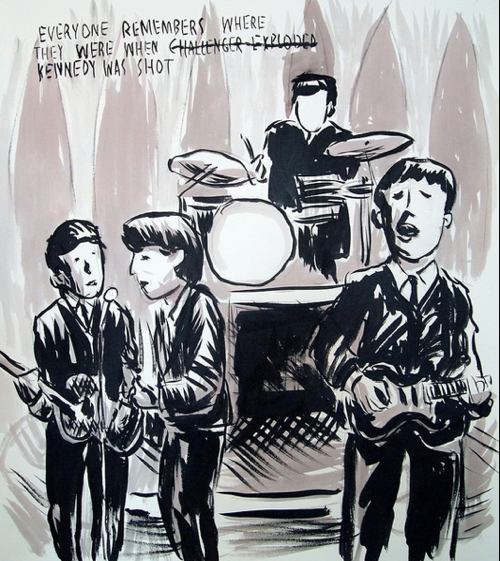
“Deauvill” is one of many examples in how memory is grotesquely destabilized through Taylor’s visual and verbal pairings, rendering a muddled yet recognizable image of The Beatles performing with the graffitilike caption:
EVERYONE REMEMBERS WHERE
THEY WERE WHEN CHALLENGER EXPLODED
KENNEDY WAS SHOT
NO/FUTURE is ripe with this stripped down language, reminiscent of zines and punk music, deliberately refusing and calling into question any explicitly laid out representations of reality. Taylor’s evocative prose is paired with his readymade character depictions–each image resembles a frame from a comic strip, ripped from his larger narrative whole and jumbled up, as if he is laying out fragments of American society distilled into key images. By stripping down an image imbued with cultural significance to its purest, essential meaning, Taylor amplifies his pieces to become a way of seeing, one that contradicts presumed narrative and moral clarity. It’s this back and forth dialectic between the word and image that reveals the derangement of our own preconceived knowledge. Nothing is completely stable, as even the character personas distrust their own reality.
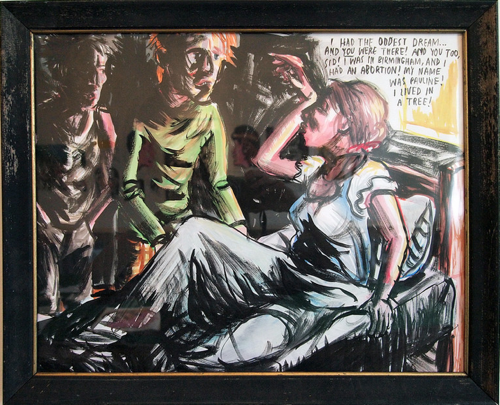
With the repetition of the question, “What has your generation done?” the target of Taylor’s NO/FUTURE exhibition comes into question. While his cast of symbolic characters are derived mostly from the late ’60s into the ’90s with the Clinton administration and the resurgence of rock ‘n’ roll popularity, Taylor’s work does not aim to act as a homage to the power of nostalgia, but instead presents a commentary about the present by delving into the past. His intriguing, high-contrast graphics are targeted at all generations of young people whose whimsical notions of the era are repurcussions of surviving pop-culture mythologies. Viewer interpretation is vital to NO/FUTURE’s intent and in many ways Taylor re-imagines the communicative element in zines, using his art as means to speak to a culture-specific audience that can “read” the symbolic transgressions latent within the exhibition. This readability extends beyond the gallery walls with NO/FUTURE’s companion artist book, available inthe three editions (the limited hardcover, artist book, and zine). While each vary in configuration, these accompanied pieces empower a complementary collision of the art, comics, and zine world, eliminating the kind of inaccessibility that many DIY publishings face and subsequently broadening the scope of publication arts.
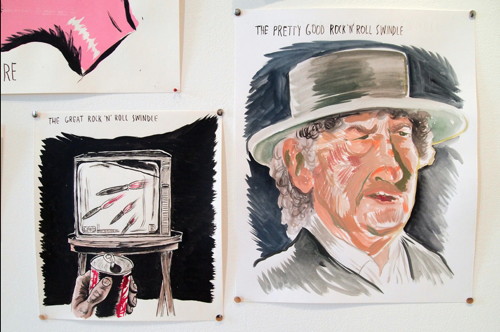
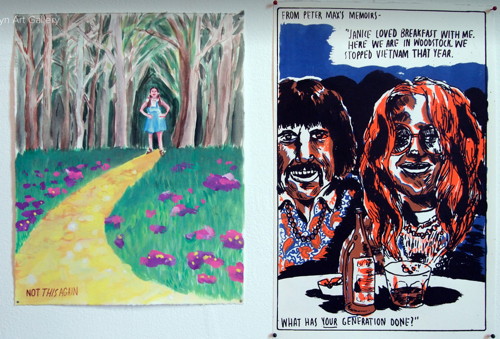
Pete and Janis
The exhibition is open until March 30th at Greenpoint’s Booklyn Artists Alliance and is the first in a series featuring Brooklyn based artists. While it is evident that more and more comics artists are being shown in galleries both considered ‘high’ or ‘low,’ Booklyn and similar spaces are setting the precedent for showcasing artists like Taylor, whose work ebbs the compulsive need for distinction between forms of art.
Check out Booklyn’s website for more information regarding NO/FUTURE and upcoming exhibitions and events.
(All Images Sourced from Mike Taylor and Booklyn)


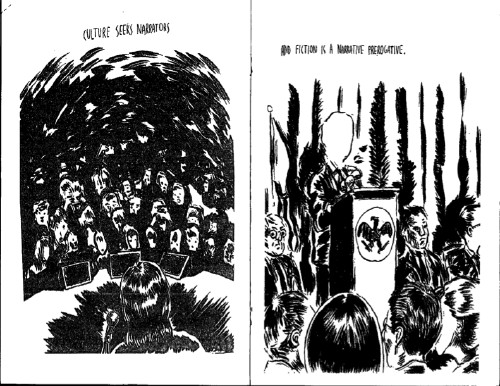
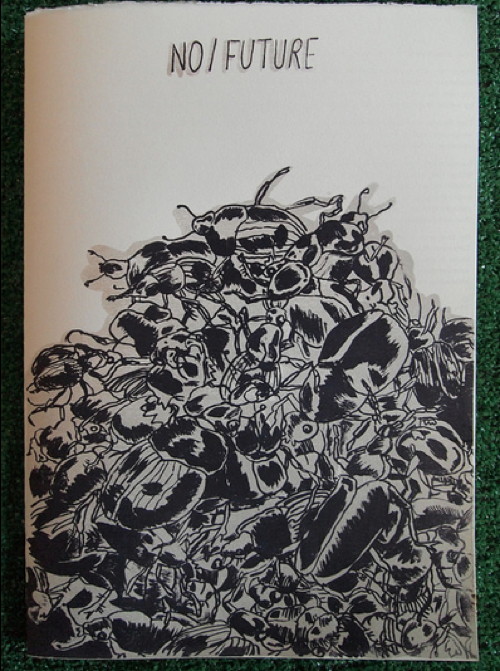
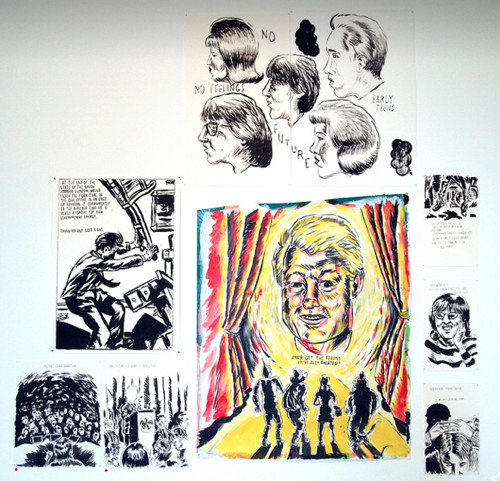
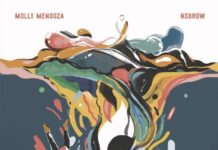
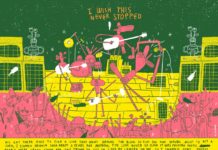

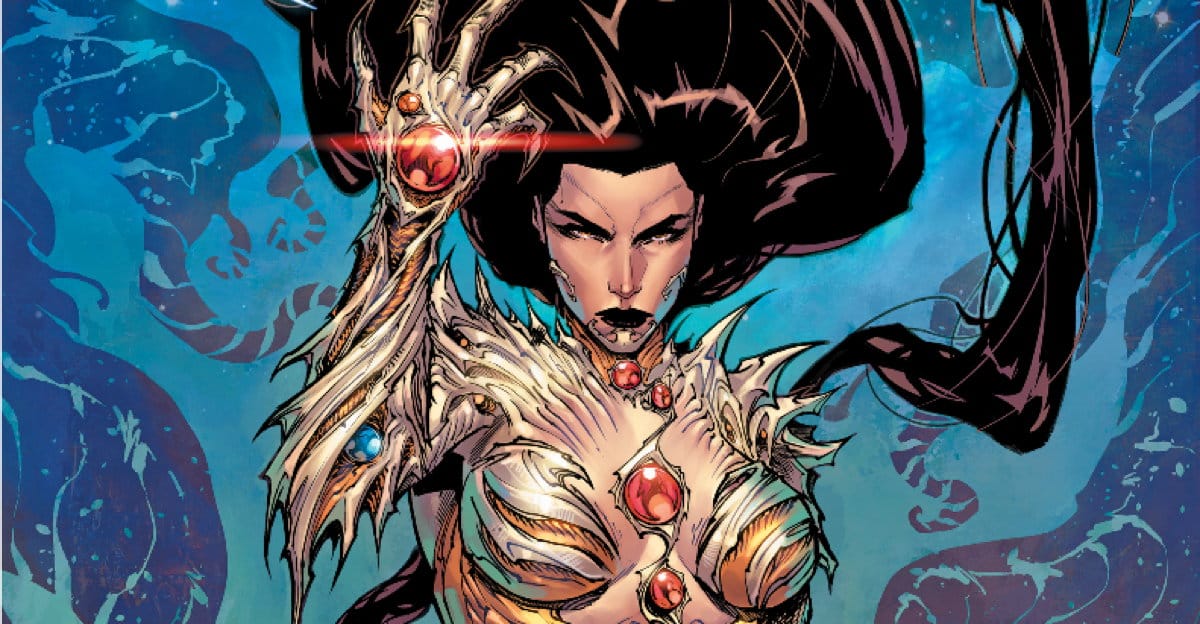


Comments are closed.